






















He felt the changes were not ones that he could agree with, so he sped up his personal and family decisions. Three similar major reorganizations elsewhere in his career; one successful, one a “going through the motions” as prescribed by business schools and at best wasteful and one an abject failure gave him food for thought about the type of business he wanted to be in.
The first option was his own busin ess, others were work in some exciting or high pressure job for someone else or become a pay packet slave with regular pay packets but lacking excitement or satisfaction. The first had the most appeal and the most risk. The second appealed to his experience but there remained the risks of whim based reorganizations and incompetent management. The third bore the same incompetency risk and probably the issue of reorganizations threatening the risk of redundancy
He thought a lot and decided on the first. Lutra conceived based on experience and a belief tha t there was a need to break the mould.
Being in Business Development in MoD and with defence companies almost since leaving the Army 25 years previously had convinced him that key weaknesses of the UK Defence Industr y were failing to invest enough financial and human resources in Business Development and too frequently failing to address the long term Army ser vice, including time in the MoD, twenty five years in Industr y and academic and sporting experience had shown him the value of competent individuals Having witnessed the way some consultants worked he vo wed not to follo w their example.
Coupling practical experiences Lutra Associates Limited became a goal he set about achieving Experience enhanced by common sense came up with some fundamental beliefs about the sort of business he wanted. In short these are.
• Business must be enjoyable. Laughter is almost a pre-requisite
• The people you work with must be people you respect and better still get on with
• Hard work is mandatory but taking your foot off the accelerator should be done without fear
• Mistakes are inevitable and acceptable, knee jerk stupidity is not
• Supervision is mostly unnecessary for people who enjoy their work and know their subject
• Experience and knowledge are key attributes of competent people
• Value is more important than cost and being able to tell these apart is critical
• Clients must be enjoyable to work with and want to succeed not just go through the motions
• Work with the best clients or ones that can be made the best
• Enthusiasm tempered with experience is a powerful attribute
• Manufacturing was not our goal

That set the scene for the sort of people to recruit. What then of the business ethos, the values the company, and the people you work with, should live by
• Trust, honesty and doing the right thing (integrity) are fundamentals
• Very close on their heels came working for profit not profiteering
• Better to launch a long-term relationship than earn a quick quid
• Putting the customer first and central to the project is essential
• Doing the right thing for clients by doing your best and giving them value for money is key
• Quality work and advice leads to customer satisfaction and in the long term more business
• Even when the contract is short think of the long term, both Lutra’s and the customer’s.
Having started to get the people issues sorted out the Business Model was the next The directors and their advisers a gonised
As our founder Tim Otter approached a point in his commercial career where he had to make some personal and family-based d e c i s i o n s h i s t h e n e m p l o y e r, M a r s h a l l L a n d S y s t e m s p
o f M a r s h a l l G r o u p i n C a m b r i d g e , d e c i d e d t o m ak e
m e fundamental reorganiza tions.
over this The more conventionally minded wanted a conventional business with conventional organization, operations and business relationships Bearing in mind the choice was to venture into the defence world there was more than a grain of common sense and lower risk in this approach However, experience in CBRN, one of the most difficult defence fields, and in the UK MoD had convinced Tim tha t there was another way He had been a successful Business Development Director in 3 companies and a board member in 3 more over a period of 25 years During that time he had acquired a little black contacts book for UK and overseas All were subject matter or countr y experts Many had either recently left the armed forces or government ser vice or had defence and security experience. He set about contacting those he felt would add something to the team, had an equally wide network and were respected for their knowledge and experience. Explaining his vison and the operating model to them took time and several coffees but it was important to get the foundation right.
The model was to bring lots of small companies and one-man bands into the fold to work as a loose confederation. His view was this was where innovation and expertise lay. Guiding these qualities not containing them was essential. There would be no contracts within the group until a contract from a client was close They all trusted each other to behave reasonably If approached by another Associate they would work uncontracted as a team provided, they were not already involved in the project or being considered to be part of another team, and therefore had a conflict of interest Once they had a greed to be a project member they were committed wholeheartedly If they found a separa te project and needed assistance, they were able to dra w of the skills of the other Associa tes The network of skills and experience involved EOD, CBRN, Vehicles, EW, Computer Security, general security (but not guarding or door minding), Firearms, Training Simulation, Logistics, Design, Engineering, M and E build and manufacture, Environmentalists, Communica tion (both Press and Radio and Telecoms), PR, Offset, Commercial, Procurement and Finance to
name only some Representational activity covering a whole gamut of defence and security equipment was part of the mix.

This breadth and depth ga ve Lutra lots of Associa tes, a vastly increased network and significantly expanded its market and project ca pability. When a project was unearthed and the Associates decided to try to win it, a team was put in place, project specific NDAs and contracts agreeing workshare and effort and deliverables were signed In fairness one has rarely been needed One of the Associates described it as “like the Magnificent Seven. A village needs protecting, a group of friends and specialists get together, ride into the village, beat the baddies, have each other’s backs and ride a way a gain ha ving been paid” Some remain involved to deal with follow up issues, e.g., support, warranty and ILS, and but essentially the Associates are free to go on their way Despite some initial scepticism it’s a model that works well It has had a slightly rougher ride from the competition and the defence trade associations because it essentially breaks the defence mould and allows a group of individuals and specialists to tackle larger project by doing away with conventional bureaucracy associated with even some small and all medium sized companies The larger bureaucra tic companies see a group of people with as much ca pability as they ha ve, except perha ps manufacturing but competitors nevertheless Conventional companies ha ve larger overheads and more expense. Because there are no accountants, it’s all open book, there are no HR people because there are no employees, there are no commercial, H and S, maintenance, IT etc departments because they are all outsourced or covered by an associate who gets paid a fair return for their work. Overheads are reduced at a stroke. Its also agile, entrepreneurial and flexible.

Given the beliefs, values and business model making certain the right people were on board was essential. The first point to make is that any associate can bring someone else on board, it helps if they have a different skill set to the existing associates but its not essential However, there are prerequisites to being an associate: 1) You must be able to work on your o wn and hit deadlines. 2) Enthusiasm combined with experience is critical. 3) You must know what you are talking about and demonstrate it to other associates 4) Our clients must be happy you know what you are talking about 4) You must fit in. Be an odd ball if you want but not one that is not round 5) Our founder should like you, not essential but it helps! Once there was a nucleus of a team the question was, what are we going to do? Remember the point was about poor business development in the defence industr y. It made sense then to think about helping get companies and their defence and security products to market This works two ways; helping get UK companies into overseas markets and overseas companies into UK Markets without having a conflict of interest with someone you are already working with
Getting companies int o the UK Defence Market is the most difficult task in defence. UK Defence procurement is beset by bureaucracy, arcane rules, is a mass of blind alleys and brick walls and largely driven by a culture that is obsessed with process not results Add time as a measurement and na viga ting this rota ting fourdimensional maze is a skilled art. Ho wever, another of the Associates reminded us of Lawrence of Arabia likening tactics to

the kingfisher; patience to wait for the fish, eyesight to spot the fish with the speed and shape to swoop, dive and catch the fish in the fleeting moment it was a target, but most important the judgement about when to strike. It involves long and skilled campaigning involving visits, press and media covera ge and exhibitions to bring the product and the compan y to the government’s/MoD’s notice Its about getting the compan y to a position where it can win a bid in a programme which might take years.
Then there is helping to bid and win a contract. Having criticised government, it is fair to say that industr y does not help itself, poor English, bad exam technique, short term obsessing about share prices, not programming or resourcing their response, and not allowing enough time to bid being the commonest tactical issues A more fundamental stra tegic issue is lack of business development and marketing commitment to a subject and programme early enough Typically, commitment is needed at least 5 years before the planned competition let alone in ser vice date Helping companies overcome this and then write the bid and knowing what to write are particular Lutra skills More fundamental is helping to get the ca mpaign that leads and underpins the bid right.
With the depth of experience and kno wledge amongst the Associates business improvement is an area Lutra gets involved in This can range from mentoring, even just chatting to, the Chief Executive or Mana ging Director to a full-blo wn review of a compan y, its structure, ethos, values, opera tions, marketing, business development and sales or just one aspect in detail. The critical aspect is tha t Lutra can choose associa tes, or with its network, find appropriate people with the domain and specialist knowledge required
Market intelligence is important. Being unencumbered with a business card and corporate identity from well known companies allows Lutra to work incognito. Being experts in their own fields and subject allows Associates to assess the market, competitors, potential collaborators, new opportunities etc without revealing the reason for their quest If required a more formal report and analysis of the subject can be carried out Given the nature of the world defence market much of this won’t be ha ppening in the client’s home territory. Lutra can deploy Associates who live in the country concerned or who are visiting an exhibition or event to find the information, or it may be within its own memor y or knowledge base
With the range of subject ma tter experts a vailable it would be surprising if Lutra does not consult for clients in an y of these subjects either singularly or in combination. CBRN is a practical example Lutra consults with companies, governments and major sports authorities about a variety of CBRN issues ranging from pure, if there is such a discipline, CBRN, through vehicle and maritime issues to government policy Put CBRN in combination with security and one has security of major events; Olympics etc, and infrastructure; electricity genera tors and petrochemical production, and commercial enterprises; banks etc It is a multidisciplined and multi-faceted operation
A pproaching the market was the next issue. By using the Associates’ and Lutra’s own networks there were many potential clients Ho w best to refine the list Man y of our most valued clients, particularly of the representa tional arena were contacts the associates already had and the companies wanted a known quantity to be their representative. Two examples being Sur vival Systems Ltd (SSL) and PlastPack Defence (PPD) with whom Lutra had worked when employed elsewhere They seemed an ideal fit for Lutra and almost coincidentally there were opportunities for their products and skills Another major client came from our network and required us to carr y out a programme assessment of a third-party government’s programme, identify our client’s potential competitors and work out their likely offering. This was followed by helping prepare the clients own bid making sure their response played to both their strengths and their opponents’ weaknesses and then attending the celebrator y drinks party
To show that analysing the task and writing the winning bid was not it’s only candle, and to demonstrate its entrepreneurial outlook and flexibility, Lutra overturned one of its own business decisions On formation the original model was that manufacturing was not going to be an ac tivity undertaken Arnold Palmer is reputed to have said “The more I practice the luckier I am!” In a series of coincidences, one of our Associates, an engineer, was at an event and met an engineering company that seemed to fit into the Lutra model, at the same time we spotted an advert in the MoD contracts bulletin for 2 simula tors Never say never, the analysis sho wed right time, right team, right answer, right response and Lutra had a manufacturing contract.

Another client, 4GD, came to us through our financial Associate who realised 4GD then a ver y new SME needed an adviser used to dealing with MoD. Two associates work to help 4GD as it goes from success to success A fourth, Kromek, asked us to help as a result of a recommendation from one of their own team who had at one time worked for one of Tim’s competitors. Networks spread far and wide and are all different! A number of Associates are, or have, when necessar y, helped Kromek
The four clients mentioned by name are part of this supplement. The fifth wants to keep Lutra under wra ps They are all world leaders in their different fields, all a t different sta ges in their development and are a pleasure to work with All fit the fundamental requirements set out at the start of the article. There are several others ranging from nascent technology start-ups to, strangely enough, large companies who particularly value Lutra’s bid writing skills and ability to see the fla ws in their proposals They particularly seem to favour one off engagement repeated, if necessar y, particularly when they perceive extra manpo wer or skills are needed We will always tr y to work with anyone, it’s in our na ture but remember the element about clients in “fundamental beliefs”. We prefer SMEs but we have no favoured size, sector or task provided it is within the skill set of the Associates All clients get the attention they ask for and deser ve Lutra’s worldwide spread illustrate our breadth and range. Our overseas collea gues allo w us to ha ve people on the ground in Australia, Singa pore, Ja pan, Kuwait, Saudi Arabia, South Africa,

The US and Canada, Norway, Sweden, Spain, and Belgium In addition to the companies discussed in this piece we work with companies from UK, the US, Australia, Ja pan, Czech Republic, Lithuania, Spain, and Sweden.


4GD are a training systems company providing innovative Urban Close Combat Ranges. We were drawn to them by their dedication to deliver y of ground-breaking Urban CQB training systems Urban Combat is a complex militar y skill where the best trained soldiers win Providing a system that delivers the best trained soldiers by constantly recording all the nooks and crannies in a room, house, building, street or settlement is hugely complex To make it more challenging to prevent “training for a scenario” the whole configura tion can be quickly changed between scenarios. This provides different experiences every time soldiers enter the facility making training a challenge they love to meet Recording ever y action, sound and shot, how teams move, support one and other and communicate so it can be played back in a hot debrief is an astounding achievement “All arms” can partake with units from different locations participating without leaving their own barracks, all seeing the same landsca pe and b a ttle picture. It reduces training time and costs, improves training productivity and produces better trained soldiers Those who train with it in the US and UK love it
SSL, another training compan y, provide Helicopter Underwa ter Egress (Escape) Training Systems (HUETS) SSL’s brand name is Modular Egress Training Simula tors (METS®) (not just for helicopters but any craft or vehicle that has a potential to turn over or flood in water) From Dartmouth (Halifax) Nova Scotia, Canada METS® are in ser vice worldwide along with dedica ted training theatres for water and fire rescue. The theatres can create light, weather and water conditions covering the whole gamut that may have caused the incident or that people involved in the incident will have to sur vive. The key aims are training to sur vive the crash or incident and then egressing the wreck and sur viving. None of these are trivial activities Training for such incidents is dangerous

SSL ha ve set out to remove as man y foreseeable hazards as possible from the training system Water drains from the METS® astonishingly quickly when hoisted above the wa ter The lifting system that gets the trainees above water in the event of a mishap, a panicking student for example, is critical to safety. SSL always provides personnel rated lifting systems with the mandatory safety systems. Backing up the training apparatus are safety first control systems, rigorous system checks and ser vicing with the operators and maintainers regularly examined and re-certified by SSL’s global maintenance team
PPD are something different again Based in Denmark and formed by a group of packa ging experts they ha ve revolutionised the design of the humble ammunition box Made of plastic PPD’s LWAC (LightWeight Ammunition Case) has the same fit, form and function and sur vivability as the steel M2A1/M83 case it replaces. The difference is the weight. LWAC weighs just 780grams compared to the 2600 grams of M2A1/M83. With a sa ving of a pproxima tely 80%. When the packed weight of small arms ammunition is considered (that’s what M2A1 carries) the saving is in excess of 10% The implications for militar y operations are huge Less weight equates to greater range or longer duration on target Vehicles or helicopters travel further on a tank of fuel or travel the same distance but deliver more impact by carrying more ammunition to the targets The stra tegic implica tions are considerable It is a saving of 1 lorr y in 10 for bulk ammunition transport or an extra pallet per logistic vehicle or far fewer flights to comba t areas for cargo aircraft. The Ro y al Danish Air Force calcula ted tha t during the Afghanistan conflict in one year they would have saved €16M/year in fuel by using LWAC rather than steel cases. Fewer logistic vehicles mean less strategic shipping required Not only are the op era tional and monetar y benefits enormous but reducing the number of vehicles involved in operations reduces casualties in the conflict area LWAC generate less noise when involved in a night resupply further reducing casualties as the chance of being detected are reduced and casualties are reduced In short modern technolog y replacing technology that is nearly 100 old is really changing the logistics of conflict.
Kromek, an SME, is based in Sedgefield Co Durham, Northern England with off shoots in the US. Kromek specialises in Radiation and Biological detection. By concentra ting on size and weight, ease of operation and innovative engineering and science Kromek have developed a system of radiation detectors These range from small mobile phone size worn by radiation incidents responders on their belt, or load carr ying equipment, hand carried or mounted on pla tforms such as vehicles or UAVs for reconnaissance or sur vey to deployable systems that can be rapidly deployed and redeployed to and around areas at high risk from radiation due to radia tion or nuclear threa ts or incidents which ma terialise unexpectedly or because of other events. Kromek’s static systems can be sited in threatened areas or to establish national networks within and around populated areas, critical national infrastructure or along transport routes which might be used to move illicit cargoes All their detectors can be networked to suitable electronic networking systems such as SIGMA which allo ws da ta to be
passed and analysed in real time enabling decision makers at all levels to make informed response decisions based on reliable real time analysed data KROMEK’s biological detection capability is rapidly gaining traction in the most difficult of the CBRN disciplines. Ra pid biological sequencing devices enable near real time detection and identification of biological threats in military, security or public health contexts enabling responses ranging from isolation of contaminated or infected people to deployment of vaccines to ring fencing an incident Like the radiation detectors networking enables rapid decision making by well-informed decision makers
Lutra’s strength is the Associates. They bring depth, knowledge, range and capability to the organization. All have vast networks of people to whom they can rela te and who provide work and useable information Some of the more prominent Associates are cited as examples to amplify this range and breadth Equally important it that they back up the Associate who might be the front person in a contract to support clients or in a ba ttle to secure business either for Lutra or a client.

When it comes to making certain that the correct messages are going out from a company to its potential customers in the right way through the most appropriate media there are few to compare with Alex Walmsley of Ashbourne Strategic Consulting Ltd., and her collea gues a t CMS led by Georgia Pickering. As well as strategic and communications advice Alex, a FRAeS and Associate Fellow of The Royal United Services Institute (RUSI) in London, runs the UK arm of GEL a US Compan y specialising in customised analytical chemistr y, radiochemistr y and bioassay ser vices to the nuclear industr y
Another Associate Fellow of R USI is Dan Kaszeta The founder and MD of Strongpoint Security Dan is a distinguished former US Army Chemical Corps Officer, former US Secret Ser vice Specialist and highly regarded author He has written the textbooks on The Histor y of Ner ve Agent Development, on Sarin and on Major Event Security.
Andy Pedder the Founder and MD of iAupro Consultancy is a former senior artillery officer in the British Army and Defence Procurement Team Leader in the UK Defence Equipment and Supply He advises on bid writing
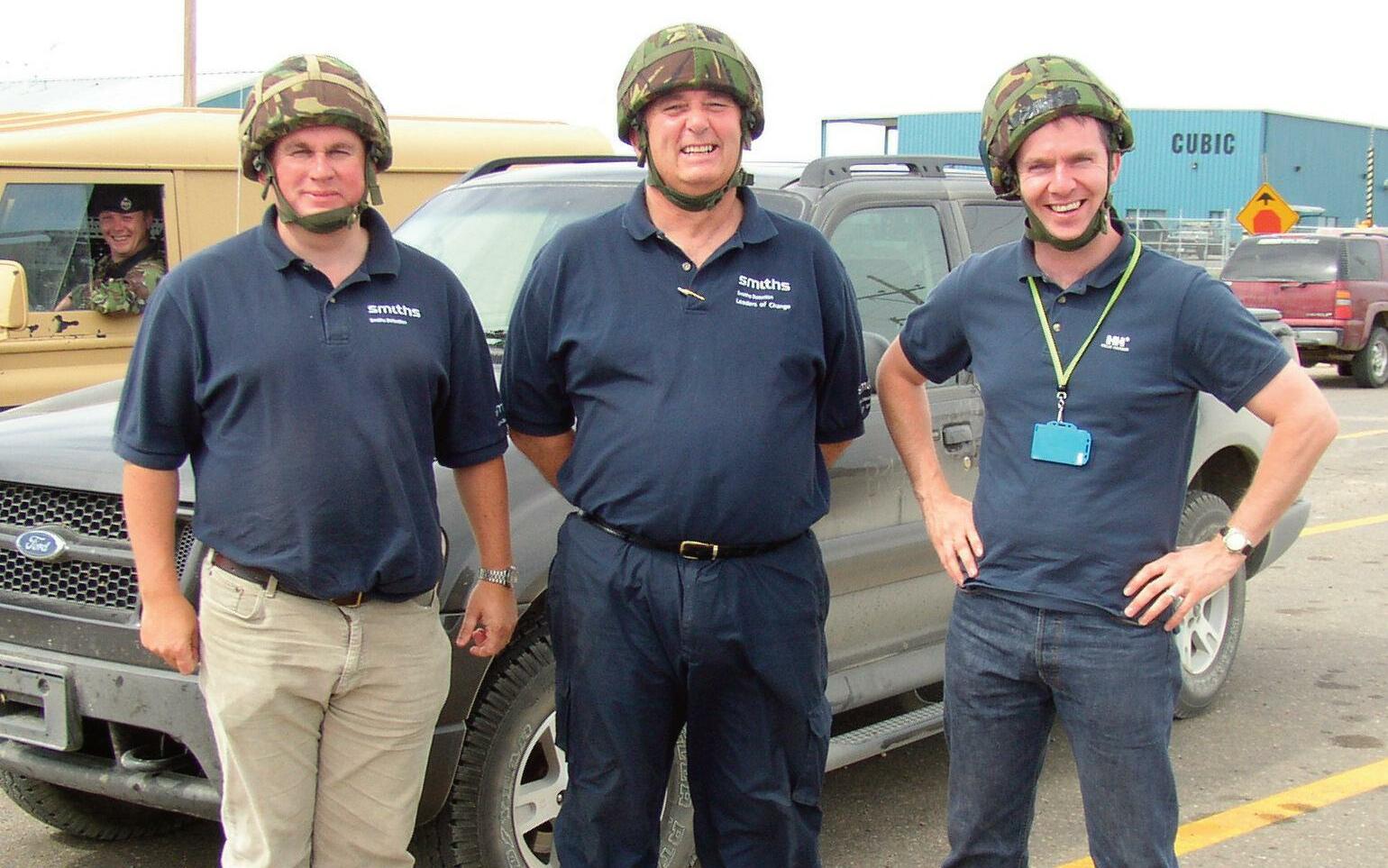

Iain Fraser is the MD of Oxford Specialist Coach Builders (OSC) OSC are highly regarded expert vehicle engineers they advise on, design and manufacture vehicle s and shelters and other items for the transport, motor sport, defence and security sectors. Iain advises on mechanical and electrical engineering designs and requirements
Tim Otter the founder of Lutra had a 19 year career involving many specialist skills in the British Army ranging form Tactics Instructor, CBRN Specialist, Defence Equipment Programme Analyst and Counter Terrorist Specialist. He then had a 25 year career in the defence industry becoming a board member of six companies and specialising in: international business development particularly in CBRN, exporting, the MoD and winning business for the companies he worked for
www.lutra-associates.com
Continuing his belief formed at Smiths Detection engagement with and understanding the end users needs is critical.

GEL performs analysis in support of deactivation and decommissioning, environmental monitoring, and hazardous and mixed waste characterisation. GEL offers the most comprehensive environmental laboratory services available from a single-site laboratory in the USA.
Founded in 1981 in Charleston, South Carolina, GEL no w emplo ys more than 185 chemists, environmental scientists, technicians and support personnel The

compan y opened its UK headquarters in 2016 GEL’s clients include over seventy nuclear po wer reactors, ever y US Department of Energ y site, eight US Army Corps of Engineers Districts and the Southern Division of the US Na vy.
In the UK, the compan y has been characterising samples from Sellafield and the Ma gnox sites for the Nuclear Decommissioning Authority.
GEL deplo ys equipment and personnel overseas to analyse contamina tion, most notably to Ja pan follo wing the Fukushima meltdo wn in 2011



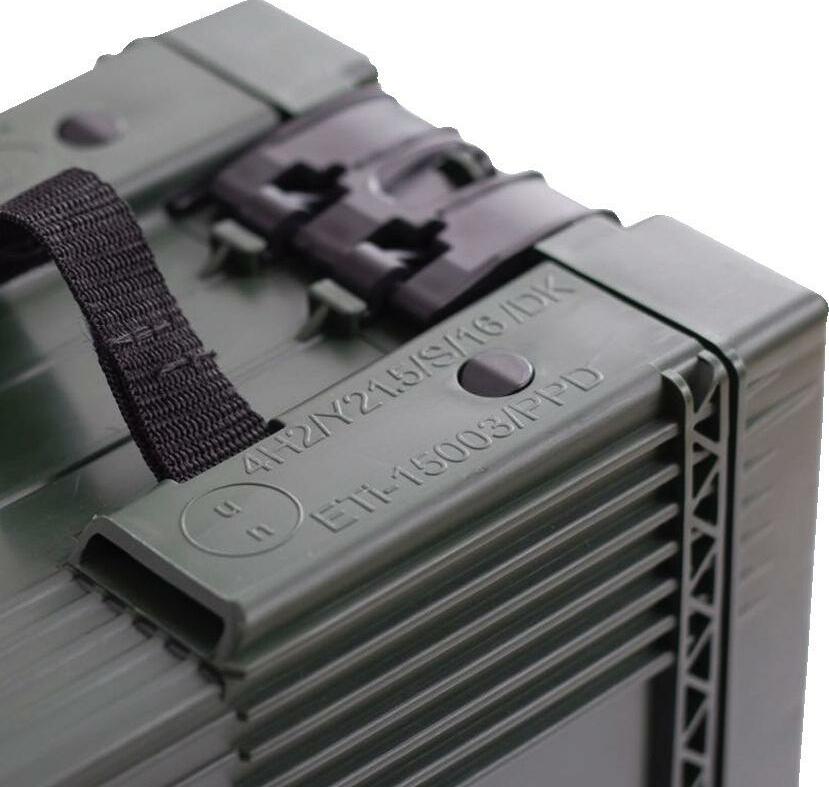

The recent Eurosator y exhibition confirmed to the Danish Company PlastPack Defence (PPD) that the simple statement that The Environment Does Matter and it Matters to Defence is both true and ver y much a topic in defence planners’ minds. War and conflict, which all Western, and likeminded, countries plan and equip to avoid and deter, is when it happens environmentally disastrous, but that is no reason not to do ever y reasonable thing in our power to prevent defence equipment, training and use being environmentally ruinous especially if it can be turned to advantage.
So called “green defence” is already showing that a few simple measures can have considerable financial and operational benefits Part of this is that non-traditional and often nonlinear thinking results in different equipment options and operational concepts The other part of green defence is that different materials and practices are just more economic and less demanding of equipment People and the environment
PPD have long realised this but it was comforting to them to see the flow of policy makers and users visiting their stand to discuss the benefits of their products Having long been in the packaging industr y the owners and executives of PPD along with their design and technology partners are steeped in civil standards and environmental best practices for design, manufacture and use of packaging materials and techniques


The central supposition of PPD’s packaging solutions is that weight costs money and uses energy and therefore saving it saves money, energy and therefore the environment. This simple truth runs slightly counter to existing defence planning thought where change is not necessarily good because change mean new processes and new methodologies Thus the longer one can hold onto an embedded position the less cost there will be

The reality is that holding on to an embedded position usually involves unnecessar y expense and the longer you hold on to that position the more money you waste and the less there is for projects and programmes that enable you to become a leaner, meaner more effective deterrent to conflict Seen from the outside any programme that is essentially the same as a product designed and first issued in the Second World War has to be, at best, long in the tooth if not well past its sell by date
How then do PPD save money and improve operational capability for the armed forces (and for that matter the police, outdoor sports people specialist equipment manufacturers and the like)? Simply put where there is steel being used in packaging replace it with specialist plastics. The target of this radical change: ammunition packaging cases

The current family of ammunition packaging cases has been around since 1941 and whist their initial entr y into ser vice made militar y logistics much easier and contributed to ammunition safety in a major way they have also had plenty of opportunity, readily accepted, to consume defence money. The onset of the PPD Light Weight Ammunition Case (LWAC) has essentially put in place the mechanism to stop this colossal waste of money and coincidentally reverse several decades of underperformance by defence platforms

Because a packed LWAC is 10% lighter than steel M2A1/M83 the savings on aircraft fuel and operating costs for strategic and tactical transport are considerable. For the RDAF €16M for fuel alone in one year supplying their small but very valuable contingent and its commitment in Afghanistan
Looking at the bare facts is instructive. The most commonly used ammunition case is the M2A1 (or M or H 83 in UK ser vice). The LWAC and M2A1 (used synonymously for M83 from now on) has a set of testing rules to show how good it was/is at protecting and promoting ammunition safety These grew up in the mid Second World War and have proliferated since The trouble is that many of these are not based on either fact or science but are random selections of tests that could be applied
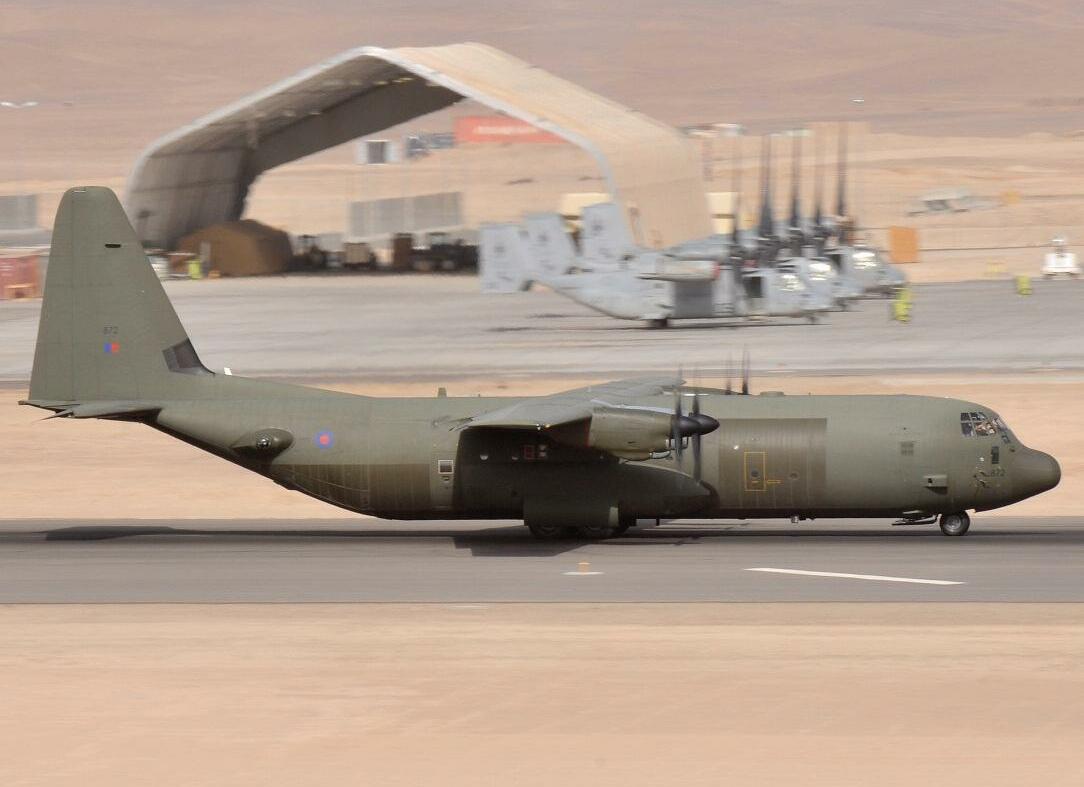
One such is a requirement to protect against fires of a certain temperature The test was designed to show metal was better than wood for storage and protection. The fact is that at that temperature the propellant in the ammunition will already be on fire and rapidly turn the M2A1 into a ver y effective bomb which will cause sympathetic fires, causing rounds to “cook off ” and

scatter burning rounds and shards of metal and larger pieces of the case as shrapnel all over the place causing collateral damage to the platform (ship, aircraft or vehicle) and unnecessar y casualties to the people tr ying to deal with the situation or evacuate the problem area Plastic merely melts, a few rounds will cook off and the remaining ones will fall to the floor.
What therefore are the operational benefits? Remember weight is the enemy and an empty LWAC has a mass of 780 g, 68% less than an M2A1 at 2500 g When packed the mass of an LWAC is 10% less than an M2A1. Look at that from a carriage point of view It is an extra layer on each pallet equivalent to one more pallet per 6 t truck More ammunition per given number of trucks or less logistic trucks in the combat area increases capability or reduces vulnerabilities and casualties
With the PPD LWAC carr ying ammunition the range and combat utility and power of armoured vehicles increases by as much as 10%
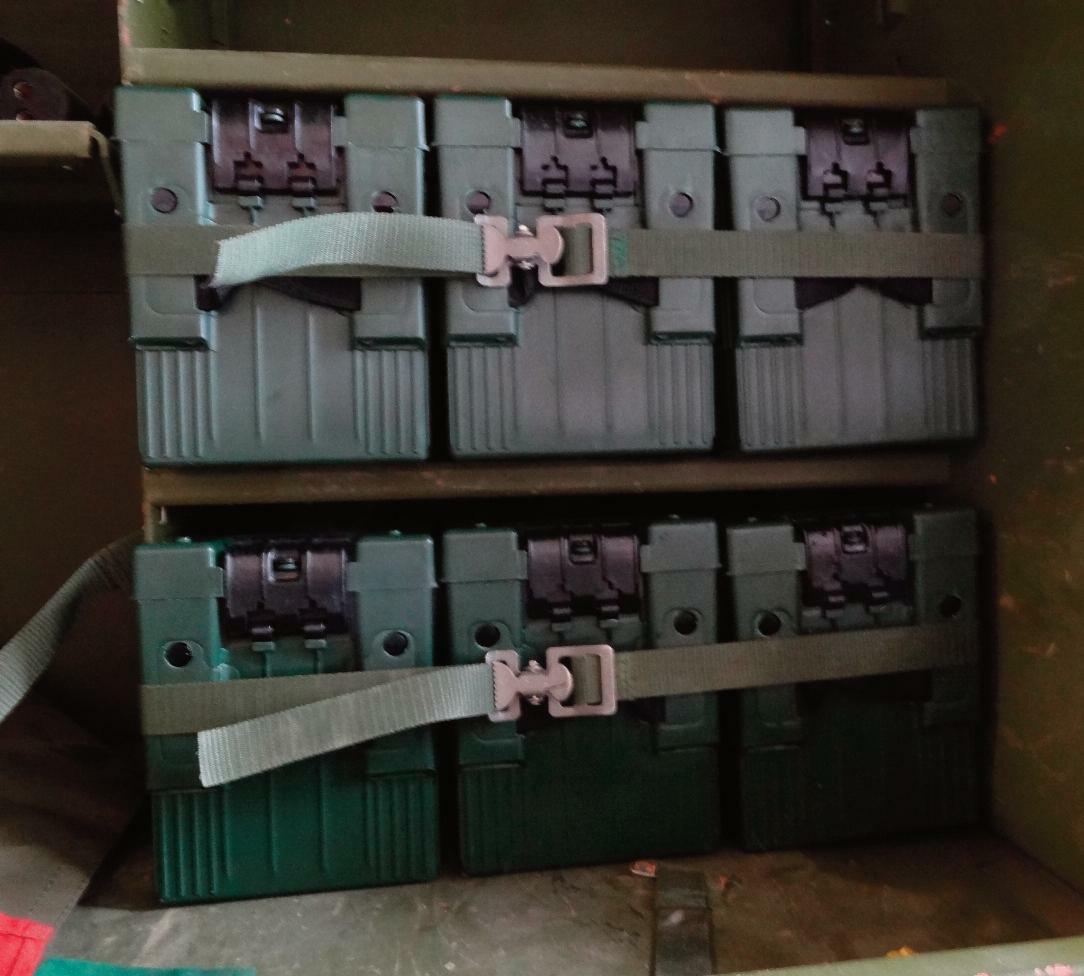
The saving read across to armoured vehicles having longer ranges On Danish Army PIRANHAs that equates to a saving of 163 kg and an additional 450 km of range and even fewer trucks in the combat area. Wars are won and lost by logistics. It seems plastic LWAC may be a war winner
Aircraft particularly combat helicopters have greater endurance,
typically 30-45 mins longer in USMC studies or carr y more ammunition Battles are won by being able to shoot for longer or more often so the endurance/ammunition quantity equation may well allow LWAC to win the battles that help to win the war.
Plastic LWAC do not make the same amount of noise as steel M2A1. Resupply at night is quieter and more secure which reduces vulnerability The reduction in logistic casualties as logistic transport is reduced is supplemented by the reduction in collateral injuries caused to veterans’ knees and hips in later life and back injuries to ser ving soldiers Treatment and management of these post ser vice comes from the defence budget

Strategically reduced weight means reduced logistic haul over logistic routes Thus the Danish Airforce were able to calculate that in 2010 by using LWAC as opposed to M2A1 they would have saved €1,140,000.00 in fuel charges alone supporting their battalion in Afghanistan Add in the aircrew costs operating costs and support costs of fewer aircraft and the saving have a direct, and dramatic, impact on the cost of overseas expeditionar y operations
Including RFID tags in the cases means accounting is easier.

Less counting requires fewer people. More cost savings and much greater efficiency
Against all this less vehicles moving less often has dramatic pollution benefits across defence In addition to less pollution there will be less overhead costs, less support costs with fewer troops, barracks and training costs
The environment does matter and it matters to defence and defence economics and capability. Showing you are prepared to make changes to the operating model will win friends amongst, or at least placate, the wokeish and ver y environmentally conscious youth of the Western World convincing them to support defence in the increasingly troubled environment we live in Hanging on to a Blimpish belief that what was for our forefather an advance still holds true is no longer an option. The operational and environmental benefits of green defence mean one generation’s advance is a millstone around the neck of the next





Sur vival Systems Limited (SSL) was incorporated in 1982 and is located in Dartmouth, Nova Scotia, Canada SSL is committed to the preser vation of human life through the development of technologies that provide realistic sur vival and safety training while addressing risk at all levels of the process
This includes producing, commissioning, and ser vicing highquality Modular Egress Training Simulators (METS®) for delivering underwa ter egress; integra ted Personnel-Ra ted Lift Systems; high-fidelity Environmental Training Aids; and Modular Fire & Rescue Simulators.


SSL has been contracted for 121 METS®; 66 Personnel-Rated Lift Systems; 90+ Environmental Training Aids, and 17 Sur vival Training Simulation Theaters (STST™) in more than 30 countries.

The compan y is a credible leader reno wned worldwide for its proven record; experience; on-time and within budget deliver y; advisor y role and trust in industr y; sur vivor testimonials; client references; research into human factors; reputa tion; and ultimately, dedication to the preser vation of lives
Training must be like the real thing. Most RHIB incidents are during launching and recover y RHIB METS® simulates this

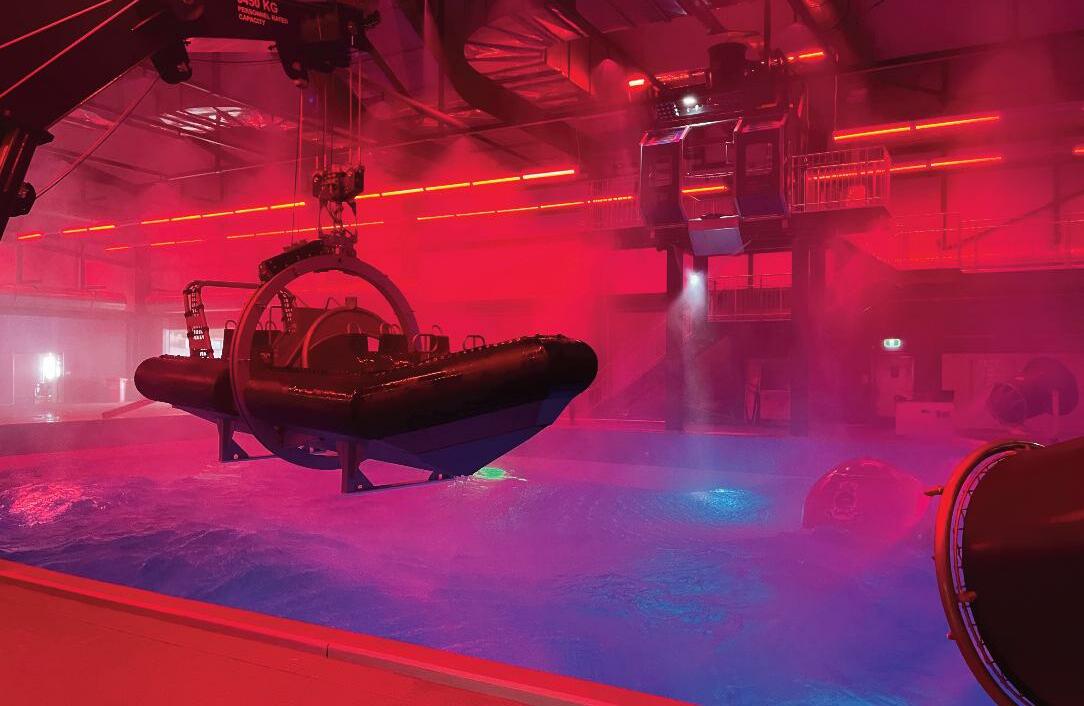
As the Original Equipment Manufacturer (OEM) of the METS ® , SSL is the world leader in underwater egress simulation technology and associated sur vival and safety training programs supported by scientifically-proven research and development (R&D).


The METS® is included with other SSL equipment under NATO Commercial and Government Entity (NCAGE) Code #L1685 and variants of the METS® include:
• Standard Models 3, 5, 30, 40, and 50
• Fighter – Apache, Cobra, H-6 Little Bird, etc.
• Jet – Tiger, Rafale, Mirage, etc.
• Modular Amphibious Egress Trainer (MAET™)
• Submerged Vehicle Egress Trainer (SVET™) AAV, HMMWV; Multipurpose
• Fast Rescue Craft (FRC) / Rigid Hull Inflatable Boat (RHIB)
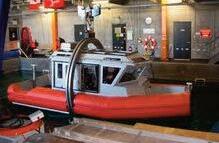
Sur vival Systems Limited is the only company in the world that manufacturers truly Personnel-Rated Lift Systems for its METS® product line. More specifically, our lift systems are designed for the dynamic action of the METS® The first Personnel-Rated Lift System was introduced in 2005, and no w our line includes the variants listed below
• Jib Crane / SmartJib™
• Cross Gantry Hoist (XGH™)
• Twin Gantry Hoist (TGH™)
In 2005, SSL established a first of its kind Sur vival Training Simulation Theater ( STST™) and R&D Center at its headquarters in Nova Scotia, Canada The STST™ is a na tural extension of SSL’s product lines and was introduced as a smart integrated and controlled venue to incorporate Environmental Training Aids that enrich students’ training experiences to best prepare for a real water mishap
Environmental Training Aids are used to simula te open sea conditions to enhance training and include simula tors and systems such as:
• Wind Fan System
• Wave System
• Rain Effects System
• Audio Effects System including soundtracks for helicopter, emergency alarms,
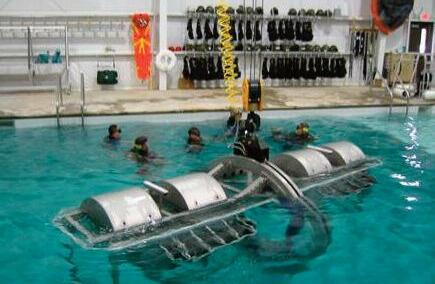
Sur vival Systems Limited’s Modular Fire & Rescue Simula tion Systems (FRSS) are engineered and safety focused to combine the development of conventional training concepts with advanced tactical methods. Our integra ted turnkey solutions provide for sustainable emergency response training products and practices
Quality scalable FRSS enable training providers to p repare and support first responders to deal with emergencies in an effective and environmentally-responsible setting.


Maritime, militar y, oil and gas, aviation industries as well as local authority emergency response teams are provided with progressive simulators for authentic and effective training

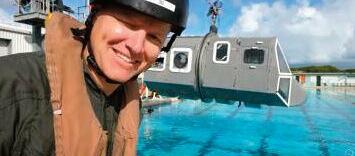
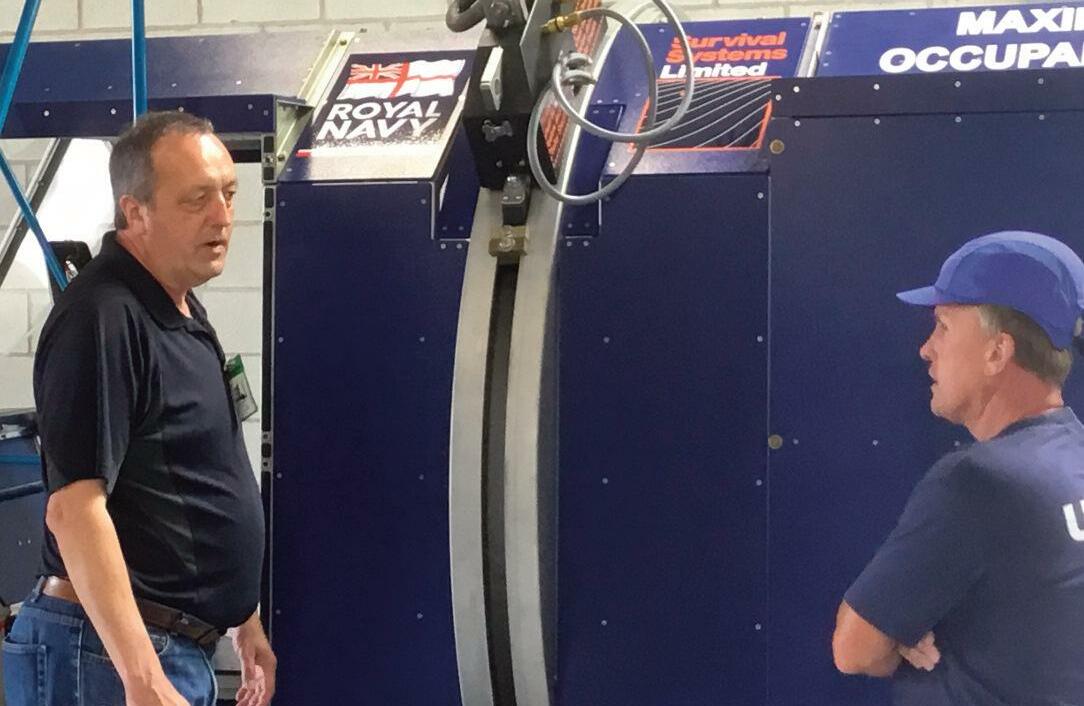
SSL offers various options for modular and scalable Fire & Rescue Simulation Systems based on five (5) and seven (7) container fire and rescue training structures including: • Specialized Rescue Units • Aviation Modules • Helideck Facilities • Helicopter • Fire Behaviour Modules • Safety Monitoring & Communication Control Units • Marine Vessel • Confined Space • FirePan™
When it comes to controlled and realistic progressive training, sta te-of–the-art safety monitoring, and communica tion control, SSL presents its customers with the ability to raise the level of learning for individuals and for teams
Sur vival Systems Limited is sought out globally by engineering and architectural groups for advice on designing water sur vival and fire training facilities We provide project mana gement ser vices and act for the client to ensure (s)he receives wha t is required to establish



Not only have they underscored the need for adaptable forces to be able to respond quickly to the unexpected They have also brought into sharp focus the importance, and difficulties, of operating in the modern urban environment At 4GD it has always been our belief that regardless of operation type – COIN or conventional warfare –the urban will grow rather than diminish in importance as an arena for war. Both due to the increase in urban populations but also due to the fat that urban offers vertical cover from the rapid proliferation of unmanned aircraft systems (UAS). As such, we set out on a mission to develop training capabilities that can provide the best environment to prepare troops for this challenge.
To achieve this, we went back to first principals and started by studying the Urban Landscape. It was immediately clear that density was key. Density of infrastructure, in terms of the number of buildings and their proximity; the lateral area these buildings covered; and, increasingly notable, the verticality (height) of these structures. Conurbations such as those shown in the picture below (Kyiv) could be one of a huge number of potential operating environments globally Preparing for operating inside of them, therefore, is essential

Density, however, does just stop at the threshold of a building As the image below shows the ‘internet of things’ is ubiquitous and offers threats as well as opportunities For instance, could internal CCTV be used to an attacker’s or defender’s advantage? Is there the opportunity to exploit a city’s utilities for force sustainability? The sophisticated nature of the urban environment needs to be leveraged in favour of the friendly force by replicating it throughout the training estate
On top of this, we need to accept a new diurnal cycle. It is well known that cities do not sleep, therefore both day and night training needs to be enhanced. This is both to allow for the transition from light and dark enclosures as well as prepare for full scale night operations. It is true that technology is reducing the distance between night and day situational awareness, and it could be argued that in some instances more can be seen at night, but we still need urban facilities that enable regular and repeatable black and white light training; ranges should never, in the 2020s, be closing at midnight
The events of the last year will not have escaped anyone’s attention and they seem to mark a clear departure from the last 20 years of Counter
Infrastructure density has grown alongside the density/quantity of troops and as well as the density of available assets On that point it is important to note that the urban environment is not just a dismounted close combat space Increasingly we are seeing the use of armour of various types, indirect fires and air/aviation assets however contemporar y dismounted troop’s lack of ability to train alongside these combined arms assets means they do not intuitively think to use them.
We believe that the importance of combined arms is such that there is a need for familiarity at even the lowest tactical levels There must be a separation of collective training (large scale exercises) and combined arms In order to leverage an advantage against a “peer” enemy that has similar small arms capability the speed with which combined arms can be brought to bear is fundamental While proficiency with small arms is still important, we intrinsically believe that greater lethality comes from the integration of combined arms at the tactical level and this is backed up time and time again by the disproportionate casualty ratios between small and combined arms.
On this, the importance of tactical level combined arms in the Ukrainian conflict is undeniable We regularly see videos and reports of tactical commanders calling in fires with small/micro UAS However, as previously mentioned, most combined arms training is limited to large scale, collective, training events
We need to democratise the ability to utilise all tools within the lethality “toolbox” and, to do that, they must be used and trained with/on at all levels. To be clear, this does not mean ever y soldier should be a JTAC, but ever y squad/team should have the ability to employ a variety of indirect fires. Central to this strategy is the connectivity of the individual soldier/team To that extent we do not believe digitised and connected are,



necessarily, the same. By that we mean our belief is in order to become more “connected” soldiers need to train more with the assets that they wish to be connected to, rather than just being overloaded with more and more technology.
Sometimes the limits to this are practical/bureaucratic rather than capability In an echo of range opening times, training estates need overhead, over the horizon and night flying permission to properly develop drone capabilities If this cannot be achieved, or while it is being achieved, for real world UAS, the synthetic world offers a potential opportunity.

Combined, these things have led to a renewed focus for 4GD We wanted to create training spaces that were adaptable, as adaptable spaces make adaptable soldiers. This meant that all of our infrastructure needed to be flexible, to prevent familiarity and drive initiative We wanted to give soldiers the opportunity to shape the environment around them, rather than be shaped by it Exercising troops must be able to operate how they want, not be limited by historical single axis field firing lanes etc

We also wanted to increase the reality of training and include the effects that combined arms would have on the training space, such as increase the closeness and complexity though the inevitable rubblisation that is caused by indirect fire (IDF) Finally, we intuitively knew that soldiering was a degradable skill and that accessible, “on garrison” training facilities were important for maximising performance; soldiers train ever y day in the gym due to their proximity, why shouldn’t they train tactically ever y day?
How then, do we meet this challenge At 4GD we started by looking at the things that were too difficult, too dangerous, or too costly to replicate and realised that the answer sat with a blended physical and synthetic environment. By blending the physical and synthetic we could quickly increase the scale of existing infrastructure Different, geographically dislocated facilities could be linked together in a single exercise, increasing density of infrastructure The movement of troops and assets could be replicated and augmented in a real-time in a digital twin of the environment to allow for the integration of combined arms, increasing combat density. Then, with the use of intelligent targetr y and special effects, synthetic combined arms could begin to have an effect in the physical world allowing for the meaningful integration of combined arms into smaller more numerous exercises We call this IntegratedRealities, where physical actions have an effect in the synthetic world and where synthetic actions have an effect in the physical world
Take the images above and below as an example. Training with live IDF (81mm mortar in this example) is difficult enough without introducing ground troops in close proximity However, introducing a realistic synthetic mortar line (blue) into a physical
training space (green) is safe and easier to do The Mortar Fire Controller (MFC) looking through their optics will see a virtual render of the exercise, with the additional synthetic ENFOR. This render will be a real-time picture of what is happening inside a facility or instrumented village They can then engage an enemy asset synthetically, by tasking the physical mortar line who then fire synthetic rounds, with the effect on target (sound, light and smoke of an explosion, as well as smart target dropping where relevant) being seen/felt in both the physical and synthetic

Central to achieving this is the collection and exploitation of data and the ability to pass/fuse this within a large-scale simulation. Here, fixed infrastructure offers another advantage by providing the foundations for the technology needed to deliver this
In this way by exploiting the strengths of the synthetic world, we can start the democratisation of combined arms. Increasing the exposure of our troops to this force multiplying capability and maximising the chances of its successful future employment To do this, and by means of a summar y, we must create a training environment that allows quicker decision making (through extensive usage we can push junior commanders mentally as hard as they are pushed physically), quick repetition (through on garrison synthetics) and proper integration (bringing the entities together physically for after action review (AAR) after a synthetic exercise (MFC, Plt Comd etc in one place)
If this is achieved, we can widen the field of view of our forces to the whole urban environment and maximise their chances of success as well as provide the foundations for further tactical innovation
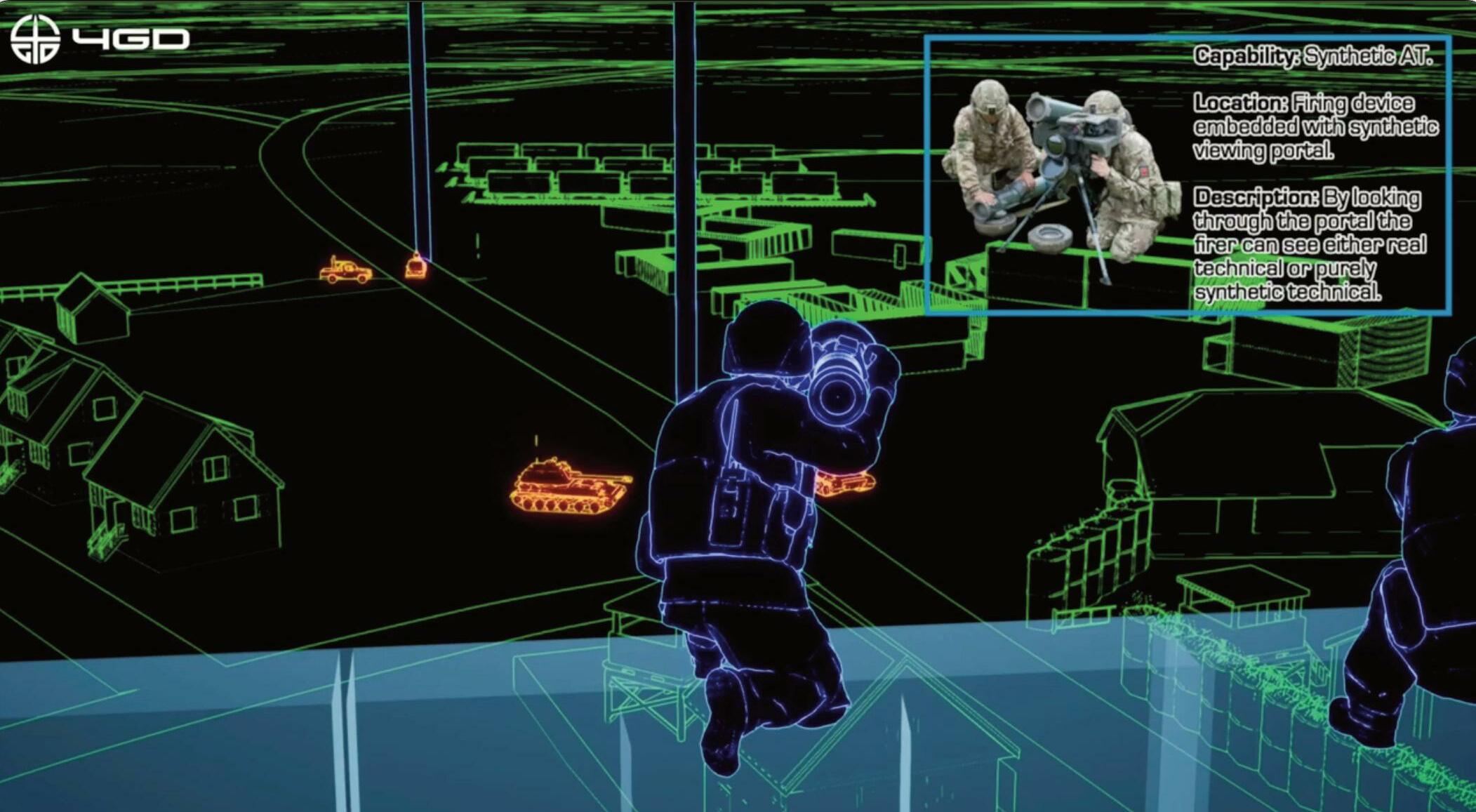
4GD is a veteran-owned and operated specialist in intelligent urban training environments, specifically the 4GD SmartFacility
The 4GD SmartFacility® integrates the physical and synthetic worlds into a single urban training environment. It is an instrumented, reconfigurable, training facility for use by DCC (dismounted close combat) troops, which uses synthetic reality to introduce complex combined arms elements within the virtual sub-system Acies®, while keeping the high fidelity “close” combat in the physical. It achieves this by allowing actions taken in the physical world to have an effect in the virtual world, and actions in the virtual world to have an effect in the physical world


The Acies® simulation is driven by another SmartFacility® subsystem, Ecfectus® Ecfectus® provides objective, real-time data for tactical performance analysis as well as to drive the Acies® simulation Together these systems allow the replication of scale by linking multiple facilities in the synthetic world, even
if they are geographically dislocated, as well as the inclusion of third party combined arms simulators
Keeping the close combat in the physical and complex & expensive combined arms in the physical opens significant opportunities for contemporar y multi-domain urban operations. For example, larger formation training units could use “lived in” conurbations for the physical clearance while practising intensive combined arms in the synthetic
Our systems are already in use with elite units in both the US and UK, with 4GD’s flagship SmartFacility in ser vice with the British Parachute Regiment
4GD are ably supported by their strategic partners D3A. Another veteran owned and operated business, D3A offer a wealth of subject matter expertise - particularly in the area of combined arms and synthetic trainers - to augment Acies


















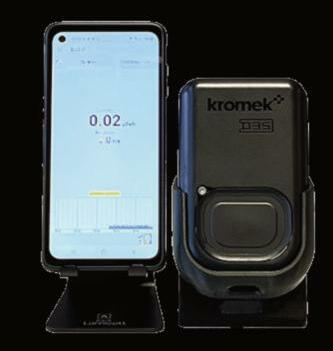





Globally, the probability of a radiological or nuclear (R&N) event occurring is on the rise Current geopolitical unrest, heavier reliance on nuclear power and weakening international frameworks against weapons of mass destruction all point towards deliberate and accidental radiological and nuclear events becoming more likely. Nuclear disasters from the past such as Fukushima and Chernobyl demonstrate the cascade of short and long-term consequences that occur when decision-makers act reactively, without up-todate data at local, national and international scales Incidents such as these can quickly spiral out of control without the necessar y strategies or technology in place to monitor and manage them before, during and after they occur. This is especially significant where there are lots of international borders in close proximity
To keep such devastation largely in the past, preventative action must now be prioritized. All decision-makers both on and off the site of an incident must be equipped with actionable intelligence to coordinate rapid, context-specific action To achieve this, the approach must be holistic The R&N incident must be detected, identified and mapped using concrete data from a range of reliable technology. From this, further action can then be taken to minimise harm to all those potentially affected by the event Prepared responses can be set in motion, such as delivering the appropriate public message to minimise panic and contamination Suitably equipped responders with
modern PPE, equipment and training can also be deployed. Unlike other CBRN threats, R&N threats are more predictable. As a result, responses to different scenarios can be prepared well in advance of an actual event. Decision-makers just need the right information and technology to know exactly what responses to implement quickly where and when. Complete situational awareness and successful deployment of the prepared responses relies upon a widespread and technically capable early warning system If an R&N event occurs, essential spectral data from each deployed static, mobile or handheld detector can be streamed to a single platform, accessible from anywhere As a result, responses on local, national and international scales can be coordinated and carried out in the appropriate timeframe Decision-makers would need access to the data showing what, where, when and how a threat was occurring Radiological data before and after the event is also essential to understand what has changed and continues to change in real-time, and, therefore, what needs to or can be done to stabilise the situation and possibly return to normal
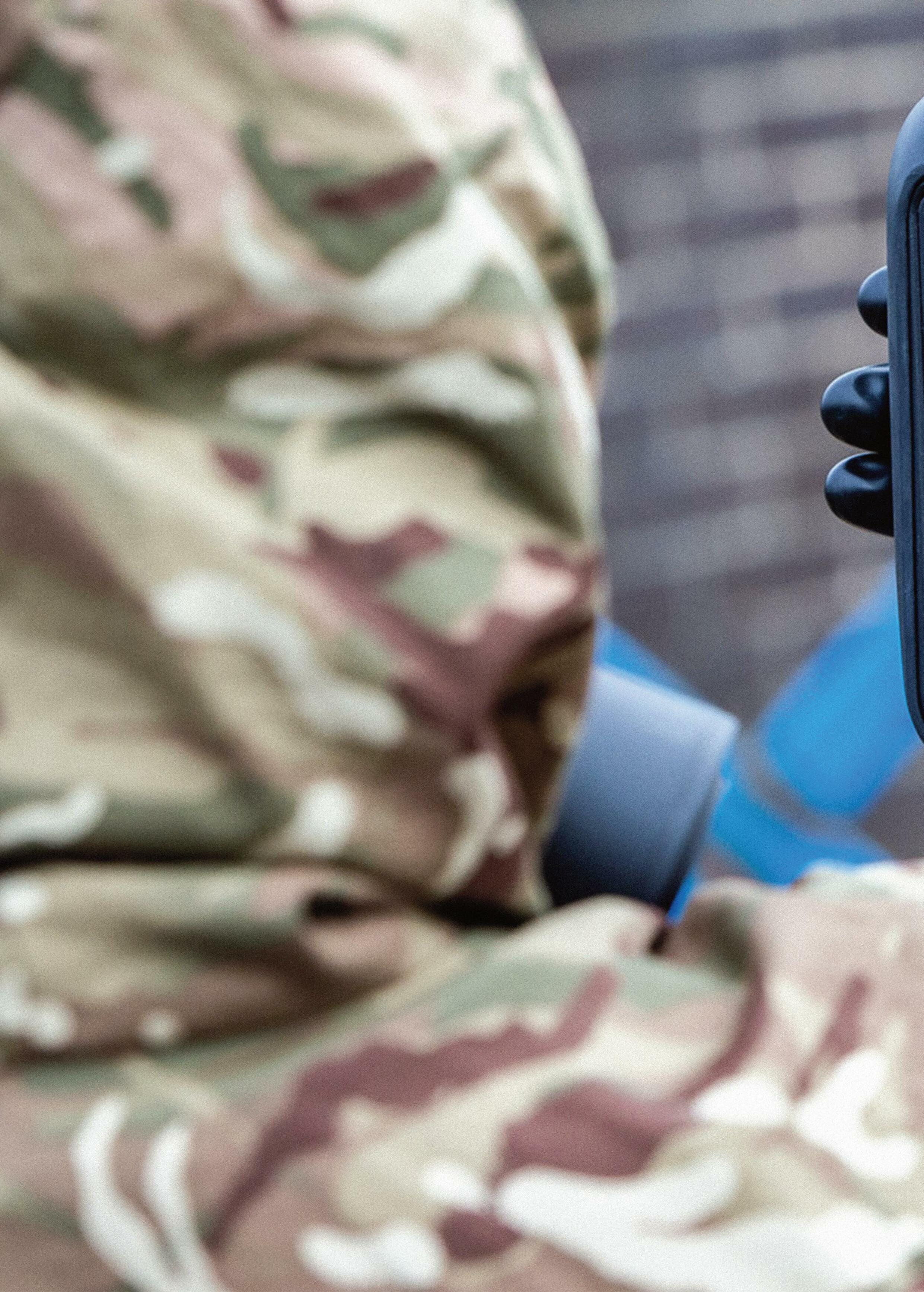
A key element of monitoring and managing R&N incidents is rapid response spectrometr y To make crucial, time-dependent decisions, local and national resilience networks must be constantly updated on the situation, no matter how remote the incident
The D5 RIID alerting a user to high dose rates of gamma or neutron radiation, along with isotope ID, so context-specific action can be taken
The Static Node R can be left anywhere to continuously collect spectral data, unattended
With networkable Static Node R detectors, radiological data is relayed to a cloud-based monitoring network ever y second. This self-contained system detects and identifies gamma and neutron radionuclides in real time. Chemical warfare agents and toxic industrial chemicals can be detected as well. Easily installed and rapidly relocatable, these ruggedised detectors can be stationed anywhere, no matter how remote or war-torn the location is. Border posts and critical infrastructure e.g. industr y plants, electricity-generating plants, around cities, communication nodes or key transport facilities can all be under constant sur veillance Robust satellite communications and flexible batter y options reduce the risk of any interruptions The pole mountings for detectors, accessories and cable routing for power and communications are all provided in a purposebuilt, weatherproof case, which can be easily set up anywhere in under 15 minutes

As well as equipping remote decision-makers with effective intelligence, those on the site of the incident must be rapidly alerted to any R&N threats or changes As part of ever yday equipment, the radiation detectors must be small and lightweight, but with no compromise on functionality Instant alerts and spectral data are necessar y for the rapid responses

of both those on site and distant decision-makers. Knowledge of the specific radioisotope or mixture present is essential for the formation of more context-specific, accurate operational decisions and responses This is something previous, dated technologies like Geiger Muller tubes or dosimeters are not capable of. For example, by identifying the half-lives of the radioisotopes present, decision-makers can determine when the contaminated area is safe for re-entr y to begin a clean-up Quick decisions must made by both parties to ensure contextspecific action is taken as soon as possible, minimising contamination and harm caused to responders and others at risk from the incident.
The wearable D3S ID used to attain isotope ID in real-time from the belt or hand of an operator


Not only must the data be instant, but the alerts reliable Kromek’s personal radiation detector, the D3M, has an ultra-low false alarm rate so users can be assured their mission will only be interrupted in the instance of a genuine R&N threat This unnoticeable addition to ever yday equipment alerts users to the presence of gamma and neutron sources at a rate twice as fast as the industr y standard With its superior sensitivity, even sources with ver y low levels of activity are unlikely to be missed. Although isotope ID is not directly displayed to the user, the D3M can store over 10,000 spectral data files with variables such as dose reconstruction over time Specialist CBRN teams can extract this data to understand the appropriate next steps e.g. how to best treat contaminated individuals, items and areas
For context-specific plans to be brought to action, both individuals and authorities on and off site need to gain and share the knowledge of the exact isotope or isotope mixture present. Optimised for usability, Kromek’s D3S ID gamma and neutron radiation detector constantly searches for radioactive sources Once one has been identified, it delivers real-time isotope ID to the user via a paired phone or earpiece as well as to remote decision-makers via rapid reachback. Spectral data is obtained in seconds over a large focal area from a hand, belt, drone or vehicle, four times faster than the RIID standard The D3S NET is more immediate in its transfer of spectral data to those situated remotely Data is transferred via networked connections for real-time situational awareness and to support coordinated responses across entire cities, regions and other complex environments
The D5 RIID, the smallest and lightest RIID on the market, also rapidly identifies and pinpoints radiological threats, even those in highly masked environments or from mixed or weak sources Localisation mode allows for the exact location of shielded sources to be disclosed, enabling action to be taken to reduce an R&N incident from escalating
On-site operator safety should always be a priority when investigating possible sources When mounted on a robot/UGV, the D5 RIID is ready to be deployed into any high-risk environment at any time ahead of any person. The remote mode of the detector allows operators stationed at a safe distance to detect and identify any radioisotopes present in a defined area or suspect package Isotopic data is delivered in real-time to a wired or wirelessly connected device at a distance. This includes isotope ID, high accuracy dose measurements for gamma and neutron radiation, exact counts per second and all energies present across spectra. Those situated remotely can also be alerted to the situation, with ANSI N42 42 files sent directly from the field via rapid reachback The D5 RIID can be integrated into any existing network and, as a result, constant situational awareness can be maintained by those on and off site, and quick in-field adjudication made possible On-site adjudications with minimal exposure and reduced risk of contamination to the operators opens the door to rapid action being taken, sensitive to the context of the R&N event
The ability to conduct aerial or ground sur veys supports the safety of responders, distanced operators and civilians alike. By mapping out the location of hotspots with detectors fixed onto drones or vehicles, such as the D3S ID or the D5 RIID, safe evacuation routes can be identified. It is also important to consider that the state of the environment and atmosphere after such an incident is rarely stagnant For instance, the presence of wind and water can further disperse radioactive material. Therefore, the ability to continuously monitor the situation with near-real time data is fundamental; responses already in motion can quickly be adapted to maintain control of the situation
Those operating drones and analysing the data must be able to do so remotely, minimising further contamination and putting no more lives at risk
The Kromek AARM drone-borne solution allows aerial sur veys to be routinely completed to delineate the areas affected by radiation and map the different radiation intensities, all from a safe distance. Repeated flight paths ensure the affected area is consistently monitored overtime, with any changes identified allowing the adaption and progression of planned strategies Any confidential data collected cannot be intercepted with the AARM Lite, as it is transferred exclusively via encr ypted one-toone radio communications The recorded data, however, can be uploaded to a secure cloud ser ver or sent to select individuals as a single file post-flight, so remote decision-makers are still informed of the overarching situation and how it may change overtime.
This integrated, radiological solution is complete by proactively establishing and maintaining monitoring networks on local, national and international scales Integrating the data from all connected detectors to a central hub gives way to a comprehensive view of the entire situation, before during and after the R&N event A quickly established radiation monitoring network would provide a means of mapping any changes as a function of time, gaining an understanding of original baselines to be restored, where the best areas are for clean-ups or sampling and allocating hazard areas Responses already in motion can also be adapted to maintain control of the situation, and any illicit transport of radioactive material can be tracked and the material seized in advance of an attack Ultimately, remote decision-makers can coordinate any necessar y responses with shared actionable intelligence, viewing the data from each detector positioned throughout a target area or region in near real-time
The ability to implement integrated local and national responses is already recognized as essential for nuclear or radiological

Bristol University were able to complete a repeated set of flight paths using the AARM to investigate the positioning of radiation hotspots in the Red Forest, Chernobyl



countermeasures by the UK Government in their ‘UK Government Nuclear Emergency Planning and Response Guidance - Preparedness’ Highlighted in the document is the REPPIR Schedule 7 Part III This states the minimum information required in an off-site emergency plan should enable local authorities and associated resilience partners to: ‘quickly alert and call out emergency responders, coordinate resources necessar y to implement the plan, undertake off-site mitigation actions to protect the public’ In the Preparedness document itself, it is also stressed that those responding to the emergency in its acute phase need to make urgent decisions on countermeasures, and any delays in these decisions could largely impact the benefit of any actions taken Therefore, by having a complete early warning system in place with multiple networked detectors, both static and deployable, key spectral data can be relayed to these decision-making authorities in near real-time From anywhere, their responses can be quickly coordinated and the appropriate protective actions executed in a timeframe short-enough to have the benefits realised For example, those far-removed from the local area who may be worried they are at risk can be quickly advised on the situation, thus reducing panic
With geopolitical unrest, conflict and climate change both present and likely to escalate in the future, never has there been a more urgent call for the strengthening of radiological and nuclear global preparedness. Integrating a variety of detectors into a scalable early warning system will help ensure planned countermeasures can be implemented quickly and adapted in the long-term It is essential that preventative action is carried forward into the future, the level of preparedness to achieve this increasingly recognized and used to advance current strategies and help deploy planned countermeasures effectively.
In summar y, yes, Kromek believe a fully integrated radiological detection system is in fact achievable, and can protect your citizens, infrastructure and nation Do you?
sales@kromek.com www.kromek.com
